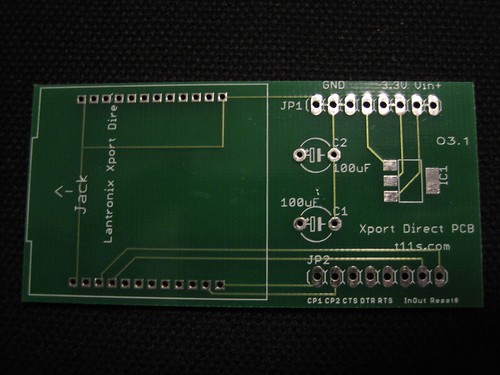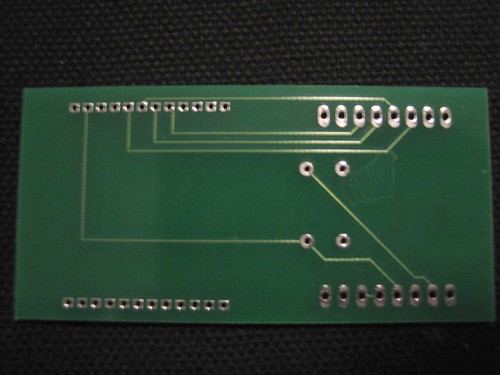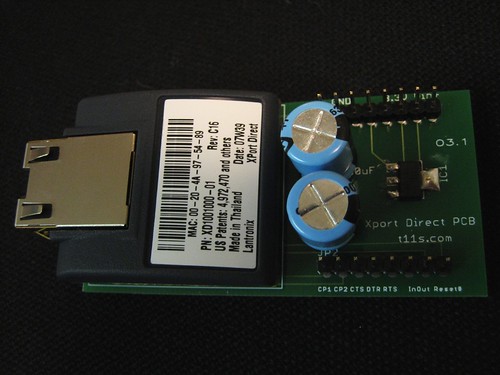I decided it was finally time to try using the free Eagle design tool along with BatchPCB.com service to make a PCB. My issue was that the wonderfully cheap Lantronix Xport Direct uses 0.2mm spaced pins which are a pain to interface to. So I figured this would be a good opportunity to design a PCB with a 3.3V power supply and the Xport broken out to 0.1" spaced standard headers.
So I populated the board and hooked everything up, and it appeared to work fine...until I started smelling something burning. I powered down, and after a short reference of the LM1117 documentation, I realized even though the regulator is only providing 200mA to the Xport, with a 9V supply the regulator needs to dissipate ~1.2W, which multiplied by the thermal resistance of the SOT-223 to ambient of 136 degrees C per Watt, means the regulator is warming up 163C above room temp, about 183C. OK, that is a little hot!
Max junction temperature is 125C, so if room temp is 20C, I can get by with 100C rise which for 1.2W implies a heatsink with a thermal resistance of ~80C/W, which means 0.3-0.5 sq. inch of heatsink (two wings larger than the size of the actual chip). Anyway, next time I'm doing at least a TO-252 or just go TO-220 with the ability to add an external heatsink if needed.
For the short term, I think I can jury-rig an external heatsink, but the lesson has been learned for my next design: an Ethernet-enabled Freeduino.
Here is a link to my Eagle library for the Lantronix Xport Direct.
Here is a link to my Eagle library for the Lantronix Xport Direct.



